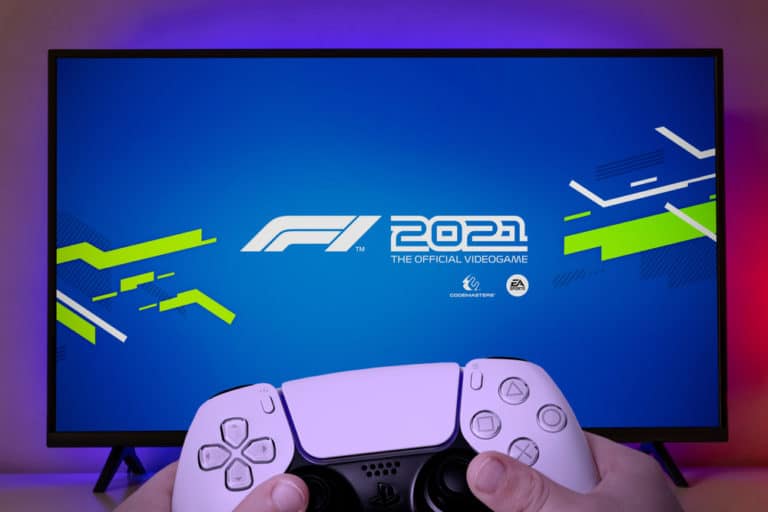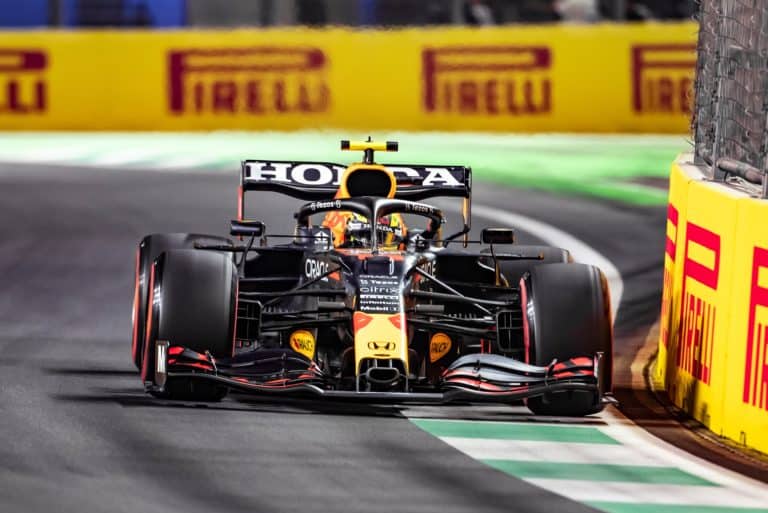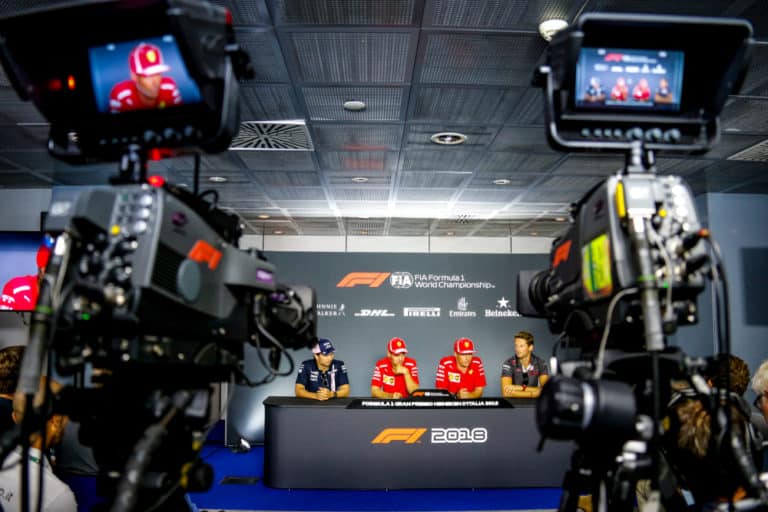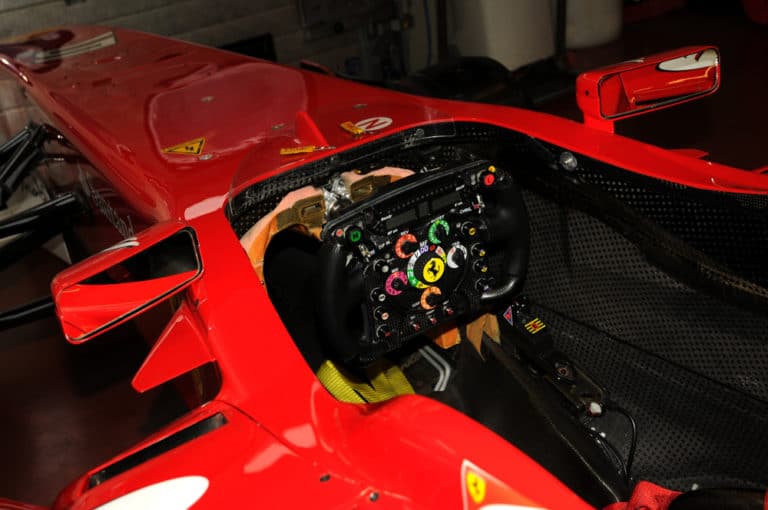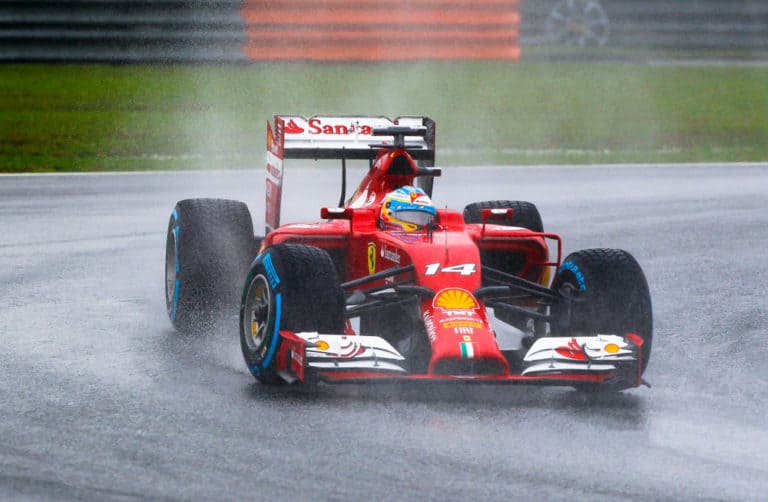Driving an F1 car is a balance between an art and a science, and drivers need to improve their lap times constantly. Getting the cornering right is one factor that determines how successful a driver will be in an F1 race. You may be wondering, “how do F1 drivers take corners?”
When drivers approach a corner before a straight, they brake a little earlier, turn in late, and start to take the apex late, usually around two-thirds to 3 quarters into the corner. This, in turn, opens up the exit, allowing the car to straighten earlier and fully accelerate earlier.
There are a few nuances to this method and three different types of corners. And the driver’s approach to each of these corners would also vary. Let’s begin to explore each of these a little further.
If you’re looking for some F1 merchandise, check out the awesome stuff at the official F1 store here.
How Many Different Types Of Corners Are There?
On any racetrack, you will notice that it will have a few long parts of the track, commonly referred to as a “straight.” The “straights” are generally followed by a series of corners, which would challenge a driver’s racing line. The corners on any racetrack can vary; however, they can be easily categorized into three different categories.
The categories are derived more from what precedes them rather than the actual corner itself. This then leads us into separating each corner by
- Corner ahead of a long straight
- Corner ahead of a short straight, and
- Directly ahead of another corner, or series of corners
Let’s further explore each corner in further depth and understand what it takes for a driver to approach each corner.
A Corner Ahead Of A Long Straight
When a car moves in a straight line, it is at its fastest. That does not mean that cars should always be driven straight or from point A to B.
However, when a corner is ahead of a long straight, drivers try to open the corner exits as far as possible to improve lap times. Exiting these corners with a little more speed will create additional momentum further down the straight. In turn, this results in time-saving on each lap.
It is advantageous for drivers to brake in a little earlier, start to turn in a little bit later, take the apex later, and open up the exit of the corner to allow for better acceleration down the straight.
A Corner Ahead Of A Short Straight
A short straight can be defined as a link between two corners without any time for an extended period of acceleration or overtaking. In this type of corner, the opportunity to gain time is on the entry to the corner and the exit of the upcoming corner, depending on the length of the following straight.
To keep it very simple, let us ignore the second corner for now. Since the straight after the first corner is short, the main concern is not the exit, due to the driver having to brake for the next corner anyway.
As drivers do not have to pay attention to the speed on exit, they must try to carry as much momentum into the apex as possible.
The idea here is to keep accelerating as long as possible and then begin turning into the apex earlier than possible. Once the apex has been passed, it becomes necessary to position the car to maximize the exit on the second corner.
Directly Before Another Corner, Or Series Of Corners
A series of corners is probably the most exciting on a racetrack. They can also prove to be a little challenging for a driver.
When a driver gets these corners right, they can also be a little rewarding. When one corner precedes another, the exit of one corner becomes the entry into the next corner. So, how do drivers decide which is the most crucial racing line to take?
The corner which precedes the upcoming long straight is always the most crucial, and any additional speed on the exit here will be carried down the straight, making for a faster lap time.
When we think about the racing line, we should work from the final corner in the sequence before the next straight.
Drivers aim for a late apex to get up to speed as early as possible on the exit, maximizing the speed down the next straight. This strategy aims to maintain a high momentum and position the car ideally for the final corner in the series.
In a series of corners, it becomes relevant to be dynamic. If a driver runs a little wider on the exit of turn one, he would have won a little extra time, but they would have also compromised their entry into the next corner.
What Factors Affect An F1 Cars Speed In Corners?
When a driver approaches a corner, whether it is a fast corner or a slow one, the driver’s ability to go fast depends on how much grip his car has.
The “grip” on an F1 car determines how it sticks onto a track and how fast it can go without losing control and spinning off the track. In an F1 car, this is easier said than done, as several factors can affect the car’s grip and subsequently affect the cornering speed.
1. Racetracks
The first factor that affects the car’s speed into a corner is the racetrack itself. Not all racetracks are built equal, with every track having a series of twisty corners and fast straights.
As previously stated, racetracks have a combination of high-speed corners coupled with a series of slower, more challenging corners that test an F1 drivers’ skills. Each corner on a racetrack would require a different technique and variable speeds for the entry and exit into and out of the corner.
These variations in track formats decide how quickly a driver can navigate his car around the corners, therefore improving his lap times.
2. Tires
The tires on an F1 car are made to maximize the car’s grip and performance on a racing circuit. For Formula 1 cars, teams have a wide selection of tires to choose from, ranging from soft compound tires to medium and hard compound tires. They can also choose Intermediates and Wet weather tires on a wet racetrack.
The choice of tire for F1 teams comes down to track surface temperature and the weather conditions on the qualifying session and race day.
A soft compound tire would give a better grip going into and out of a corner, but it also degrades very quickly result in the tire being changed every 25 to 30 laps of a race.
On the other hand, a harder compound tire does not have as good grip as a soft compound tire, but it does last longer than the soft compound tire.
With a poor grip of the car to the track, the entry and exit into each corner can be drastically affected.
3. Weight Of The Car
The car’s weight is another contributing factor determining the speed at which an F1 car can enter and exit a corner successfully. With a lighter car, it is much easier for the driver to navigate a car around a corner than a heavier car. It becomes a little cumbersome to manoeuvre the car through faster and slower corners with a heavier car.
The car’s weight can be affected by many things, one of them which is the fuel load that the car is carrying onboard. A car that is well balanced in terms of weight distribution is a lot easier to manoeuvre around corners.
4. Aerodynamics Of The Car
The car’s aerodynamics is possibly the most crucial factor that affects the car’s ability to function at its best when cornering.
When the car’s aerodynamics is not set up correctly, the car becomes impossible to steer through corners costing him valuable time in qualifying and on lap times.
The car’s aerodynamics is the amount of downforce exerted onto the car by the air surrounding the car. F1 teams can direct and channel the wind around the car using a series of wings, flaps, and diffusers.
The main elements of the aerodynamics of the F1 car are the front wing and the rear wing, which produce most of the downforce for the car.
Tracks like Monaco require more downforce as it is a smaller track with many twisty corners and slow bends. For a driver to better navigate through a corner, he needs to have optimum downforce so the car can stick to the track without spinning off.
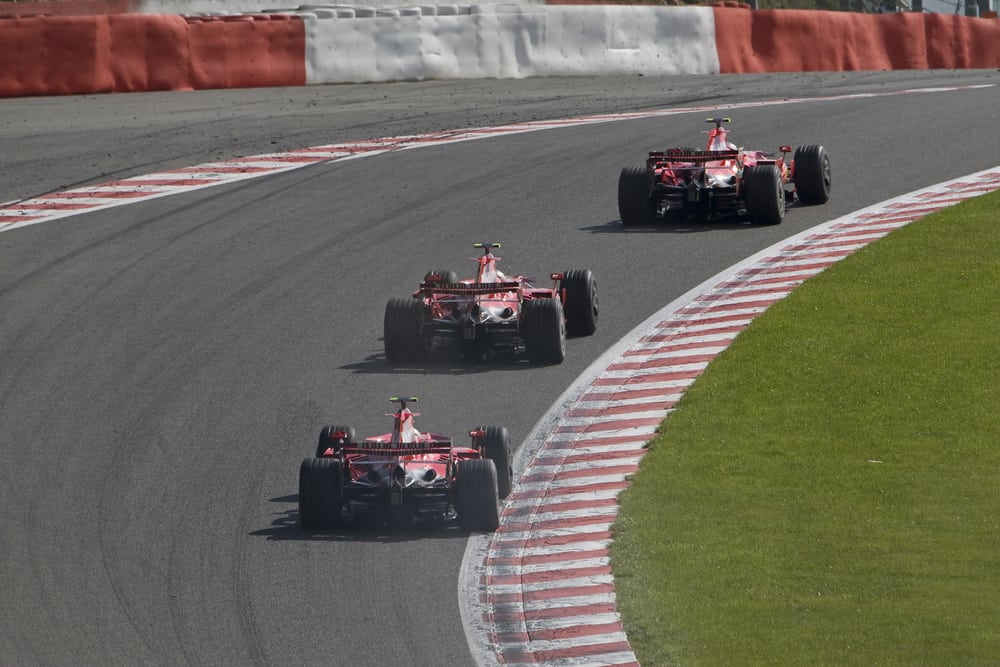
What Is A Braking Zone In F1?
The braking zone in Formula 1 can be defined as the point of an F1 circuit where a driver needs to brake before entering into a corner to maximize his speed when exiting a corner.
When an F1 driver approaches a corner, they need to brake quite hard, and the biggest challenge for drivers is finding out the ideal point at which to begin braking. Braking too early or too late can be costly for a driver as he could either lose his place or cost him his lap time. In addition, if a driver brakes too late, he could find himself crashing into a barrier.
For drivers to find their braking points easily, every racetrack has brake marker boards to aid drivers in braking as early as possible. These brake markings range between 200km/h to 50km/h, varying across tracks.
Usually, drivers aim to enter into a corner slow and exit as quickly as possible. The “perfect” braking point lies approximately 60 meters away from the corner.
The driver needs to judge the braking point with needlepoint accuracy as they travel at very high speeds. Braking points become harder to judge with such accuracy. On the opposite side, drivers have a little bit of leeway when braking as early as 100 meters and do not lose much time in the process.
However, this takes a lot of practice for drivers to get right, and sometimes they do not always do. As soon as drivers hit the “sweet spot,” they can edge through the corners quickly.
From that point, drivers continuously refine their braking points to suit their driving style to maximize their speed and potential. The more they refine their braking ability, the better will their cornering speeds be. As a result, drivers use their braking strategy to “out brake” their opponent.
Conclusion
Formula 1 racing is always a spectacle to watch but can also be challenging and sometimes fun for the drivers. Every driver has a unique driving style to suit the car and racetrack.
No two drivers racing styles are the same, and how each driver approaches and exits a corner depends on how they manage the car’s braking going into the corner and subsequently exiting the corner.
As stated previously, several factors determine the speed at which a driver can maneuver through each corner on a track, ranging from the track itself to the aerodynamics of the car. These factors work in tandem to assist the driver in making his cornering as effortless as possible.

